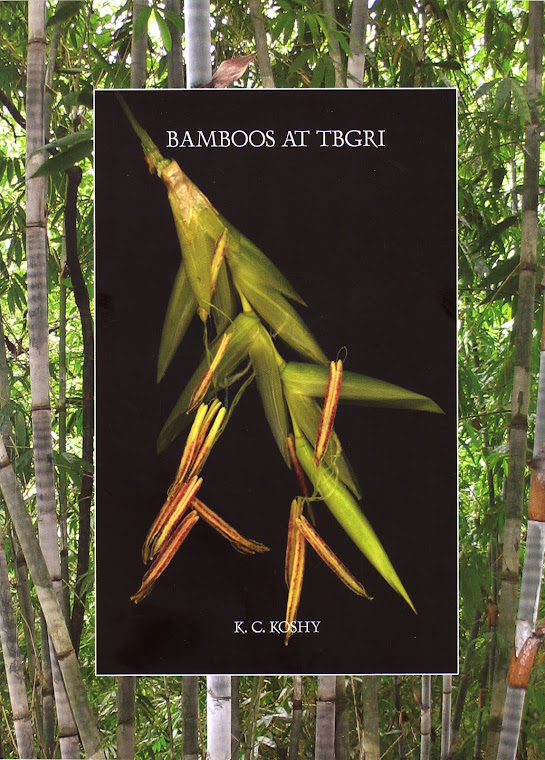Botanical Journal of the Linnean Society 167: 131.2011
Book Reviewboj_1130 131
Bamboos at TBGRI by K. C. Koshy. Palode, Thiruvananthapuram, Kerala: Tropical Botanic Garden and Research Institute, 2010. 104 pp. Paperback.ISBN 978-81-920098-0-3. US$30.
Bamboos are among the most rapidly growing plants on earth and they are an important renewable resource, because their stems are tough but flexible and are used widely for construction and paper production. A collection of bamboos, a bambusetum, can function as a source for dissemination of this renewable resource and the one at the Tropical Botanic Garden (TBGRI) in Kerala, India, has fulfilled this purpose very well.
Dr. Koshy has studied bamboos at TBGRI in Palode since 1987, resulting in the establishment of a fine collection of bamboos, many of which were collected from the wild. This well-illustrated book summarizes his work and describes the establishment and history of the bambusetum.
Apart from the living collections of bamboos (spread over 6.59 hectares, containing 933 accessions belonging to 68 species), there is also a small herbarium and spirit collection. All accessions (live collections, dried specimens and spirit collections) are mentioned after a detailed description and distribution of each species. All species described are accompanied by a habit picture and sometimes by additional pictures showing the flowers, seeds or stem details.
This book provides a good general overview of tropical bamboos (although it is by no means monographical and the author did not intend to include all known species of bamboos), and it shows how a botanical collection (in this case a bambusetum) can be used to disseminate interest in botanical diversity by involving local communities that may benefit from it.
Anyone interested in establishing a bambusetum in the Tropics, or who wants to identify an unknown bamboo in a garden or in the field, will find this book a most useful guide. It is attractively produced and is affordably priced.
MAARTEN J. M. CHRISTENHUSZ
Botanical Journal of the Linnean Society, 2011, 167, 131.
© 2011

No comments:
Post a Comment